
|   |

|   |
'Sharat Smriti' festival of music and dance - Manjari Sinha e-mail: manjari@sinha.com January 18, 2023 Odissi dancer and Guru Geeta Mahalik, and her Upasana School of Dance and Music celebrated their annual festival 'Sharat Smriti' at the Stein auditorium of the Habitat Centre, Delhi. The two-day festival was held in memory of the late Sharat Mahalik who stood like a solid rock behind Geeta and her creative endeavours, reaching the heights she desired to achieve. On this occasion, Geeta Mahalik and her reputed institution conferred the 'Upasana Samman' upon Guru Jitendra Maharaj and this writer on the first day and Guru Trinath Maharana and Pt. Chetan Joshi on the second day, for their lifetime contribution to the field of Art. 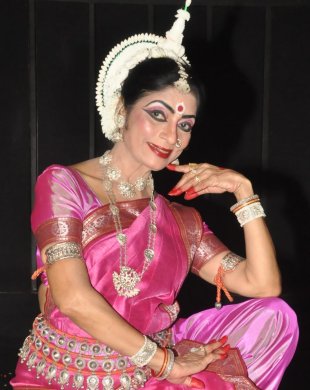 Geeta Mahalik The inaugural evening opened with group choreographies in Odissi by the host Geeta Mahalik. The invocatory 'Hari Om Sharanam' highlighted the promise of Krishna in Bhagavad Gita "You surrender yourself to me and I will protect you from all troubles and obstacles." Based on the Meera bhajan "Hari tum haro jan ki bheer" immortalized by MS Subbulakshmi, the great promise was underlined through the mythological stories of Gajendra Moksha, Draupadi Cheer Haran and Bhakta Prahlad-Hiranyakashyap sequences incorporated as short dance-dramas. Geeta had a well-trained group of male and female dancers in Sushant Maharana, Prakash Mohanty, Sangita Mohanty, Sipika Narverkar, Daphne Tara, and Meghna Dastidar, to do justice to her choreographies. The other piece was 'Durga Chandika' where the various mythological stories connected with Devi, the cosmic energy, were imaginatively choreographed with dramatized sequences of Madhu-Kaitabh and Shumbh-Nishumbh Vadh, epitomizing the victory of good over evil. The frozen tableaus, for instance, Devi Durga sitting on a lion, got her repeated applause. Vaibhav and Arati also joined the previously mentioned dancers, in this item. 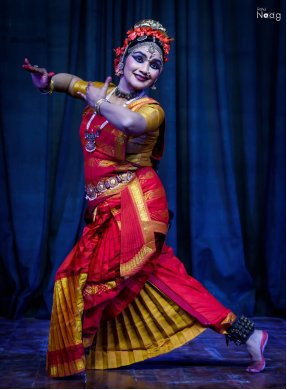 Meenu Thakur Kuchipudi dancer Meenu Thakur and her group opened with Ganesha Stuti "Vande Vinayakam" in raag Hamsadwani and taal adi, paying homage to the elephant headed Ganesha, the son of Shiva and Parvati, who is considered to be the remover of all obstacles. 'Ramayana Saaram' next was the gist of the whole epic set in Ragamalika and adi talam. The story of Rama, the prince of Ayodhya, who is exiled to the forest for fourteen years, encounters many evil demons, ultimately slain by him. As his consort Sita is abducted by Ravana, Rama with the help of Hanuman and the Vanara Sena defeats Ravana and brings back Sita from Lanka. This Kuchipudi choreography encompassed the entire story of Ramayana, which was essentially the depiction of the victory of good over evil. The concluding Kuchipudi item was 'Graha Katha', stories of planets according to Hindu mythology, depicting the power, evolution, nature, and the effect of planetary motion through the intricacies of stories about Chandra (Moon) and Mangal (Mars). Mother Earth is attracted to Lord Vishnu, the protector of the Universe since Vishnu saves her from plunging into the depths of the ocean. Unable to accept the marriage proposal by Earth, Vishnu grants her a loving son, in the form of Mangal, which is the protective planet of Mother Earth. 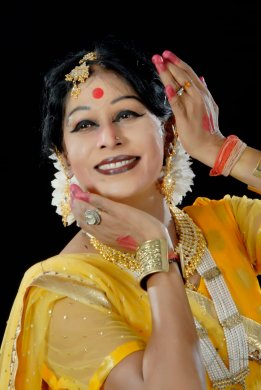 Shovana Narayan Kathak choreographies by Shovana Narayan and her group opened with 'Aangikam', the opening verse of Abhinaya Darpana by three of her students Pallavi Lohani, Komal Biswal, and Suparena Singh. 'Koham' was the solo Kathak presentation conceived, choreographed, and performed by Shovana Narayan. It was about searching for one's own identity, realizing inner strength, and also about the urgent need of women's empowerment in the present scenario. Shovana had most intelligently used the Kathak repertoire incorporating Tode, Tukde, Parans, Chakkardar Tihais and Gat-Nikas et al. Mahima Satsangi also joined her in the concluding 'Chaturang'. 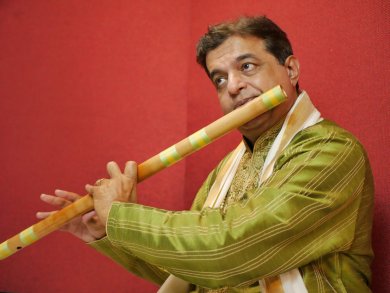 Pt Chetan Joshi The second day opened with the mesmerizing flute recital by Pt. Chetan Joshi. He chose the melodious evening raga Bihag for his main presentation and played a brief Alap-Jod-Jhala in Tantrakari Ang before playing a madhya composition in rupak taal of seven beats cycle. The traditional Teentaal Bandish "Baaje ri mori payal..." that followed was striking with its 'sam' on the Mandra Pancham. Ably accompanied on tabla by Pradeep Sarkar he also played a Pahadi Dhun set to deepchandi taal concluding with a Kaherwa Laggi, in the semi-classical mode of Thumri-Dadra. Master Aanjaney Joshi, his gifted son and disciple, provided him with steady support on the flute. 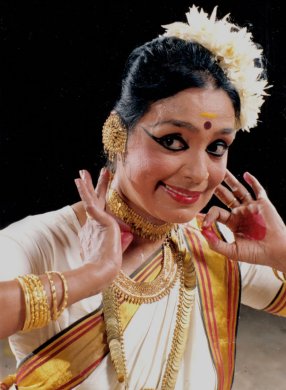 Bharati Shivaji The dance segment showcased captivating choreographies in Mohiniyattam and Manipuri by the 'Lasya lakshmi' Bharati Shivaji and Pradeep Kumar and Loyalakpa group respectively. The graceful group of Bharati Shivaji opened with Mukhachalam in Ragamalika starting with ragam Nattai and concluding with Neelambari set to a variety of taal patterns. The group also performed Pandattam on Mahakavi Vallathol's composition in raag Kambhoji where he compares life's philosophy with its ups and downs to the game of the ball. This was followed by Bharati presenting Jayadeva's ashtapadis from Geeta Govinda in solo format, opening with 'Chandana charchita' and 'Sakhi hey' in ragas Pantuvarali and Mohanam. As per the tradition of Guruvayur temple in Kerala, she presented the second set of ashtapadis beginning with shringar bhava and ending with bhakti shringar in ragas Kambhoji and Dwijawanthi. Surprisingly this Dwijawanthi of Kerala's traditional Sopana Sangeetam was neither akin to its Carnatic namesake nor resembled the Hindustani Jaijaiwanti. No wonder Sopana Sangeetam has its own specific flavour to augment bhavas. 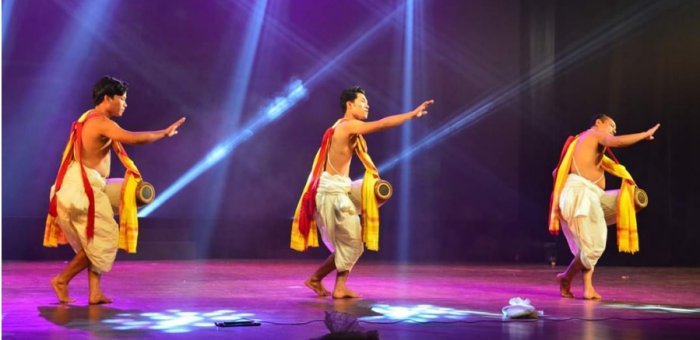 Loyalakpa group Pradeep Kumar and Loyalakpa group opened their Manipuri presentation with Pung Cholam, an indispensable part of the classical Manipuri Sankeertan. It is unique in the sense that the dancers while executing graceful body movements play pung or mridang with intricate rhythms and cross-rhythmic patterns. This was followed by stick balance. Performed with three wooden sticks this is one of the most entertaining martial arts of Manipur. Concluding with Dhol Cholam, the Manipuri drum dance executed by drummers to a particular rhythmic pattern during Holi festival, Pradeep Kumar and his energetic group of male dancers reached Sharat Smriti to its climax with their wild ecstasy. 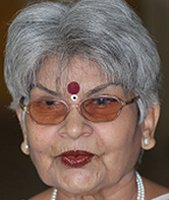 Manjari Sinha has an M.A. in Sanskrit and Music, and trained in vocal, tabla, sitar and Kathak dance. She has regular columns in national dailies as a music and dance critic. |